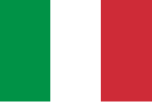The Cathedral
Having been started under a Gothic influence in 1431 and concluded during the Renaissance in 1502, the Cathedral encompasses not only Gothic characteristics, but also elements from the Renaissance. The external part is majestic and outstanding while the inside is vast and expansive where you can freely admire the great nave devoid of columns, covered in a magnificent barrel vault, which was the idea of the expert architect Lorenzo da Bologna. The Latin Cross layout has its sides lined up with the cardinal points which creates an extraordinary effect of an architectonic meridian. At midday the rays of the sun strike the two white stone spheres placed at the entrance above the halfillars, which illuminates them so that they look like two small planets.
Most worthy of noting is the large fresco which runs along the entire perimeter of the church, also the wonderful fresco of the Assumption in the apse (the work of Bonconsiglio) together with the incredible altar of Saint Anthony and the Blessed Sacrament. Amongst the numerous works of art housed in the cathedral, one that stands out is the alterpiece which represents the Transfiguration, painted in 1555 by Paolo Veronese, commissioned by the same Francesco Pisani who had wanted Palladio as the architect for his villa immediately outside the city wall.
Just as noteworthy is the work by Bonconsiglio representing the Madonna with Child and the Saints (1507), to- gether with the lively representation of the Battle of Lepanto (which is said to date back to early XVII century) and the Miracle of the Rain (1695).
On the sides of the doorway there are two frescoes, one showing David with Goliath’s head and the other representing Judith after having decapitated Holofernes, which were discovered during restoration work in the ‘30s which, due to various elements, make you as- sume it is the work of Giorgione.
Most worthy of noting is the large fresco which runs along the entire perimeter of the church, also the wonderful fresco of the Assumption in the apse (the work of Bonconsiglio) together with the incredible altar of Saint Anthony and the Blessed Sacrament. Amongst the numerous works of art housed in the cathedral, one that stands out is the alterpiece which represents the Transfiguration, painted in 1555 by Paolo Veronese, commissioned by the same Francesco Pisani who had wanted Palladio as the architect for his villa immediately outside the city wall.
Just as noteworthy is the work by Bonconsiglio representing the Madonna with Child and the Saints (1507), to- gether with the lively representation of the Battle of Lepanto (which is said to date back to early XVII century) and the Miracle of the Rain (1695).
On the sides of the doorway there are two frescoes, one showing David with Goliath’s head and the other representing Judith after having decapitated Holofernes, which were discovered during restoration work in the ‘30s which, due to various elements, make you as- sume it is the work of Giorgione.



